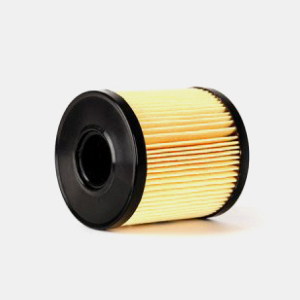-
 Afrikaans
Afrikaans -
 Albanian
Albanian -
 Amharic
Amharic -
 Arabic
Arabic -
 Armenian
Armenian -
 Azerbaijani
Azerbaijani -
 Basque
Basque -
 Belarusian
Belarusian -
 Bengali
Bengali -
 Bosnian
Bosnian -
 Bulgarian
Bulgarian -
 Catalan
Catalan -
 Cebuano
Cebuano -
 China
China -
 Corsican
Corsican -
 Croatian
Croatian -
 Czech
Czech -
 Danish
Danish -
 Dutch
Dutch -
 English
English -
 Esperanto
Esperanto -
 Estonian
Estonian -
 Finnish
Finnish -
 French
French -
 Frisian
Frisian -
 Galician
Galician -
 Georgian
Georgian -
 German
German -
 Greek
Greek -
 Gujarati
Gujarati -
 Haitian Creole
Haitian Creole -
 hausa
hausa -
 hawaiian
hawaiian -
 Hebrew
Hebrew -
 Hindi
Hindi -
 Miao
Miao -
 Hungarian
Hungarian -
 Icelandic
Icelandic -
 igbo
igbo -
 Indonesian
Indonesian -
 irish
irish -
 Italian
Italian -
 Japanese
Japanese -
 Javanese
Javanese -
 Kannada
Kannada -
 kazakh
kazakh -
 Khmer
Khmer -
 Rwandese
Rwandese -
 Korean
Korean -
 Kurdish
Kurdish -
 Kyrgyz
Kyrgyz -
 Lao
Lao -
 Latin
Latin -
 Latvian
Latvian -
 Lithuanian
Lithuanian -
 Luxembourgish
Luxembourgish -
 Macedonian
Macedonian -
 Malgashi
Malgashi -
 Malay
Malay -
 Malayalam
Malayalam -
 Maltese
Maltese -
 Maori
Maori -
 Marathi
Marathi -
 Mongolian
Mongolian -
 Myanmar
Myanmar -
 Nepali
Nepali -
 Norwegian
Norwegian -
 Norwegian
Norwegian -
 Occitan
Occitan -
 Pashto
Pashto -
 Persian
Persian -
 Polish
Polish -
 Portuguese
Portuguese -
 Punjabi
Punjabi -
 Romanian
Romanian -
 Russian
Russian -
 Samoan
Samoan -
 Scottish Gaelic
Scottish Gaelic -
 Serbian
Serbian -
 Sesotho
Sesotho -
 Shona
Shona -
 Sindhi
Sindhi -
 Sinhala
Sinhala -
 Slovak
Slovak -
 Slovenian
Slovenian -
 Somali
Somali -
 Spanish
Spanish -
 Sundanese
Sundanese -
 Swahili
Swahili -
 Swedish
Swedish -
 Tagalog
Tagalog -
 Tajik
Tajik -
 Tamil
Tamil -
 Tatar
Tatar -
 Telugu
Telugu -
 Thai
Thai -
 Turkish
Turkish -
 Turkmen
Turkmen -
 Ukrainian
Ukrainian -
 Urdu
Urdu -
 Uighur
Uighur -
 Uzbek
Uzbek -
 Vietnamese
Vietnamese -
 Welsh
Welsh -
 Bantu
Bantu -
 Yiddish
Yiddish -
 Yoruba
Yoruba -
 Zulu
Zulu
Fiberglass Rendering Mesh for Enhanced Strength and Durability in Construction Applications
Understanding Fiberglass Rendering Mesh A Comprehensive Guide
Fiberglass rendering mesh is a crucial component in the field of construction and home improvement, particularly in the application of external wall insulation systems. This specialized mesh is designed to provide additional strength and durability to render coatings, ensuring that the finished surface withstands various environmental conditions.
At its core, fiberglass rendering mesh is made from alkali-resistant fiberglass strands that are woven into a robust fabric. This unique composition allows the mesh to remain intact and functional even in the presence of moisture and alkalinity, which can be detrimental to other types of mesh materials. The primary purpose of fiberglass mesh is to reinforce the render layer, distributing loads and stresses evenly, thereby minimizing the risk of cracking.
One of the most significant advantages of using fiberglass rendering mesh is its lightweight nature. This characteristic not only makes it easier to handle and apply but also reduces the overall weight of the rendering system. This can be particularly beneficial when working on structures that may not support heavy loads without further reinforcement.
fiberglass rendering mesh

Furthermore, fiberglass rendering mesh is available in various sizes and configurations, making it adaptable to different project needs. Homeowners and contractors can select the appropriate mesh thickness and size based on the specific requirements of their rendering system. A well-chosen mesh enhances the adhesion of the render, creating a seamless bond that increases the longevity of the finish.
When applying fiberglass rendering mesh, it is essential to follow specific installation guidelines to achieve the best results. The mesh should be embedded within the render layer, ensuring that it is fully covered and adequately secured. This process typically involves applying a base coat followed by pressing the mesh into the wet render and then applying an additional top coat to encase the mesh completely.
In addition to its structural benefits, fiberglass rendering mesh also contributes to the aesthetic appeal of exterior walls. It allows for the application of various render finishes, which can be customized to fit the architectural style of the building. This versatility ensures that homeowners can achieve a beautiful exterior while also enhancing the performance of their insulation systems.
In conclusion, fiberglass rendering mesh is an indispensable tool in modern construction and renovation projects. Its strength, lightweight nature, and versatility make it the preferred choice for reinforcing render applications. By ensuring proper installation and selection, builders can vastly improve the durability and appearance of external walls, leading to a more sustainable and appealing living environment. As the demand for effective insulation solutions grows, fiberglass rendering mesh will continue to play a pivotal role in the industry.
-
Shipping Plastic Bags for Every NeedNewsJul.24,2025
-
Safety Netting: Your Shield in ConstructionNewsJul.24,2025
-
Plastic Mesh Netting for Everyday UseNewsJul.24,2025
-
Nylon Netting for Every UseNewsJul.24,2025
-
Mesh Breeder Box for Fish TanksNewsJul.24,2025
-
Expanded Steel Mesh Offers Durable VersatilityNewsJul.24,2025











